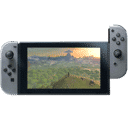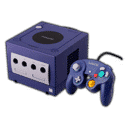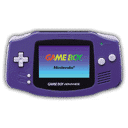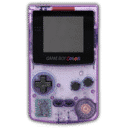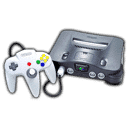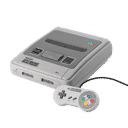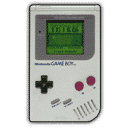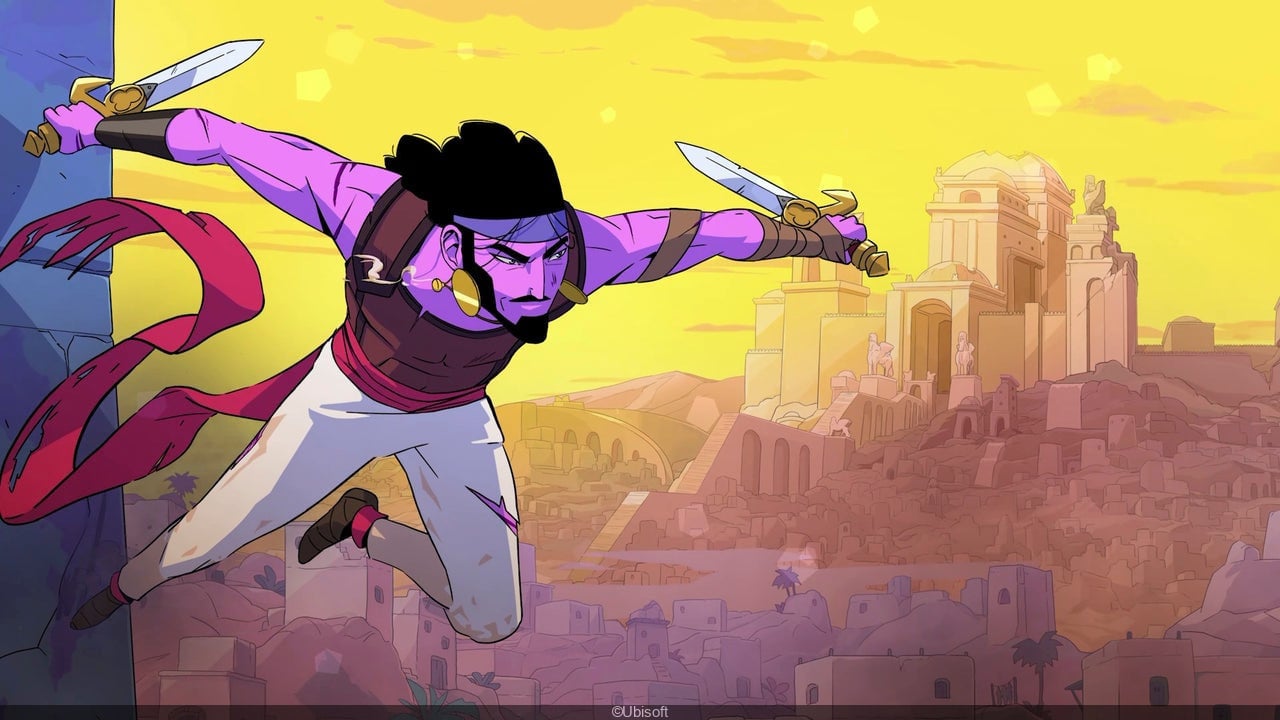
Summary:
The Rogue Prince of Persia finally has a firm date with Nintendo’s hybrid family, and that timing could not be better. Ubisoft and Evil Empire are bringing the acclaimed 2D roguelite action platformer to both Nintendo Switch and Nintendo Switch 2 on December 16, 2025, via the Nintendo eShop. That launch follows its full 1.0 release on PC and current-gen consoles earlier in the year, which means players on Nintendo hardware jump in after months of updates, tuning, and added variety. We step into the Prince’s shoes as he sprints, wall-runs, and vaults his way through procedurally generated levels, kicking enemies into spike pits and chaining attacks with stylish flow. On Switch and Switch 2, that run-based structure fits neatly around busy schedules: you can knock out a quick attempt on the couch, on the train, or in bed before sleep. With Very Positive impressions on PC, a sharp animated look, and tight movement that rewards clean inputs, this is shaping up to be one of the more tempting December downloads for anyone who enjoys tough but fair action with long-term progression. Below, we walk through the release details, the core loop, how it feels tailored to handheld play, and practical tips for your first attempts so you’re ready the moment it hits the eShop.
The Rogue Prince of Persia on Switch Release Date
The Rogue Prince of Persia reaches Nintendo Switch and Nintendo Switch 2 on December 16, 2025, landing just as the year winds down and players look for something new to sink into over the holidays. That date brings the Nintendo versions in line with the rest of the lineup, following the game’s earlier August launch on PC, PlayStation 5, and Xbox Series X|S. The Switch releases arrive digitally through the Nintendo eShop, with a physical edition planned for April 10, 2026, for collectors who like a box on the shelf. Behind the project sits Evil Empire, the studio that earned its reputation working on Dead Cells, and Ubisoft as publisher, tying it directly into the long-running Prince of Persia series. For anyone who has been waiting to see whether a Nintendo version would show up before committing, the timing makes the decision easy: you get the complete package, on both current and next-generation Nintendo hardware, with no need to wait for extra patches or missing features to catch up.
What kind of game The Rogue Prince of Persia is
The Rogue Prince of Persia is a 2D roguelite action platformer where every run is a chance to experiment, learn, and push a little farther into a dangerous, stylised version of ancient Persia. You play as a Prince armed with fluid parkour skills and a mix of melee and ranged attacks, using a magic bola and an arsenal of weapons to fight an invading Hun army. Levels are procedurally generated, so layouts shift from one attempt to the next, but core rules remain consistent: spike pits hurt, kicks send enemies flying, and clean wall-runs turn deadly rooms into a personal playground. Between attempts, you retreat to a hub called the Oasis, where you can upgrade weapons, unlock new medallions, and prepare for another run. That structure makes the game easy to drop into for a short session yet hard to put down once you feel a good streak building, which is exactly why it lines up so nicely with how many people use their Switch.
How the roguelite loop works on Nintendo Switch and Switch 2
The heart of The Rogue Prince of Persia lies in its loop: you start a run from the Oasis, push through several biomes filled with enemies, traps, and secrets, and inevitably fall to a misstep or a nasty combination of foes. Instead of a traditional game over, you snap back in time, reset at the hub, and carry forward long-term progress while losing that specific loadout. On Nintendo Switch and Switch 2, that means you can treat each run like a self-contained adventure that slots into spare pockets of your day. Maybe you only have twenty minutes on the commute; you can still explore a biome or two, grab some medallions, and learn new enemy patterns. The quick-restart structure also helps the game travel well between docked and handheld play, since there is never a long gap between pressing “Continue” and jumping right back into dynamic combat. Over time, you gain more tools, more medallions, and more knowledge, so even failed runs feel like small stepping stones toward mastery rather than wasted time.
Runs, deaths, and returning to the Oasis hub
Every time the Prince falls, his mysterious time-shifting artifact yanks him out of danger and rewinds him back to the Oasis, a calm space that acts as your planning board between attempts. On the surface, that might sound punishing, but in practice it creates a satisfying rhythm: push as far as you can, accept that one mistake can end an attempt, and then rethink your approach while the Prince strolls past NPCs and upgrade points. On Switch and Switch 2, this hub works especially well as a natural break between short play sessions; if you need to close the system or put it into sleep mode, the Oasis is a comfortable place to pause. It also helps the story breathe, giving you glimpses into the Prince’s relationships, the threat facing his kingdom, and the broader world beyond each battlefield. After a few cycles, you start to look forward not only to the next biome but also to the familiar routine of checking new medallions, swapping gear, and deciding which build you want to try next.
Procedurally generated levels and growing biomes
Procedural generation can feel like a buzzword, but here it mainly means that the game shuffles familiar building blocks into fresh sequences every time you set out. Each biome has its own visual identity, enemies, and platforming challenges, yet the paths you take through those spaces change run to run. One attempt might send you across wide courtyards full of archers and spike pits; another might emphasize tight interior corridors where wall-runs and ceiling swings matter more. Over early access and post-launch updates, the selection of biomes, enemy types, and weapons has grown, giving Nintendo players a more varied experience than those who tried the earliest PC builds. That variety helps keep runs from blurring together, especially when you’re playing in short bursts on a handheld, and encourages experimentation with different routes instead of chasing a single “perfect” line every time.
Acrobatic movement and wall-running on a handheld
Movement is the signature flavour here, and it shines on a portable system where precise inputs can still feel crisp on the smaller screen. The Prince can wall-run, vault over foes, swing from poles, slide, and hop from surface to surface with a responsiveness that instantly calls back to the spirit of the classic Prince of Persia games while leaning into modern roguelite sensibilities. On a handheld, that mobility gives each thumbstick flick or button press a sense of physicality: you feel the difference between a hurried climb and a clean, deliberate chain of actions. Because your success depends so heavily on reading the environment and timing jumps, playing in handheld mode invites you to hold the system closer, almost like a parkour puzzle box you’re tilting and picking apart. Docked mode, meanwhile, lets the slick animation and painterly backgrounds breathe on a larger screen, but that core feeling of momentum flows through both setups.
Parkour flow, traps, and environmental hazards
The Rogue Prince of Persia borrows the classic trio of spikes, pits, and pressure plates but rearranges them into nasty, playful combinations that test your timing more than your patience. You might dash along a wall to avoid a floor lined with spikes, only to spot a rope you can grab to arc over a line of archers, then kick an enemy back into a trap they were guarding. That sort of flow is deeply satisfying when it clicks, and it’s one of the main reasons so many players have praised the game’s platforming on other systems. Traps are rarely cheap; they broadcast their danger clearly, encouraging you to slow down, read the space, and then commit. On Switch and Switch 2, that makes the game surprisingly relaxing even when it is difficult, because success feels like solving a moving environmental puzzle rather than brute-forcing your way through waves of health sponges.
Using mobility to control every fight
Combat is built around the idea that your feet are as important as your blade. Instead of trading blows in place, you are encouraged to vault over enemies, kick them into hazards, and use the Prince’s acrobatics to break up tight groups before they can surround you. Ranged options add another layer, letting you tag distant threats or finish off weakened targets without dropping your current line. This emphasis on movement turns each encounter into a miniature platforming challenge, where positioning matters as much as damage numbers. On Nintendo’s systems, that design dovetails nicely with the physical layout of the controllers: using a stick and a few face buttons feels natural, and repeated runs gradually build muscle memory. Before long, you are dashing into a room, clocking the spikes, archers, and melee enemies in a heartbeat, and then gliding through a choreographed sequence of jumps and kicks that leaves the Prince untouched.
Weapons, medallions, and building a loadout
Underneath the responsive movement sits a layer of build crafting that keeps the roguelite loop interesting over dozens of attempts. The Prince carries both a primary and a secondary weapon, chosen from a growing pool that ranges from nimble blades to heavier, slower options with bigger payoff. Along the way, you collect medallions that slot into your equipment and modify how those tools behave, adding effects like extra damage after dodges, elemental twists, or bonuses for aggressive play. Because each run offers a different selection of weapon drops and medallion rolls, no two builds feel quite the same, and that’s where a lot of the game’s replayability lives. On Nintendo Switch and Switch 2, this system is easy to manage in short play sessions: you can quickly compare items, swap medallions, and experiment with unusual combinations without needing a huge time investment in a single sitting.
Primary and secondary weapons explained
Your primary weapon forms the backbone of most engagements, setting the rhythm and range you feel comfortable with. Quick blades favour darting in and out, landing many small hits and relying on mobility to stay safe. Heavier weapons ask you to commit to slower, stronger swings but reward you with bigger chunks of damage and satisfying crowd control. The secondary weapon usually acts as a tactical tool, offering ranged options, crowd breakers, or situational abilities that pair with your main choice. Because you can swap loadouts even in the middle of fights, you are never locked into a bad decision for an entire run; if a boss or biome really punishes your current style, you can adjust on the fly. That flexibility is a blessing on a handheld where you might be playing while slightly distracted – the game gives you room to adapt instead of punishing you for every imperfect pick.
Upgrades, medallions, and long-term progression
While each individual run resets your immediate gear, long-term upgrades stick around and slowly tilt the odds in your favour. You invest resources earned on attempts into unlocking new weapons and medallions, expanding the pool of possibilities for future runs. At first, that might just mean a couple of extra tools in the rotation; later, it turns into a much richer web of synergies that can snowball into powerful builds. Medallions in particular are where the true creativity emerges, letting you lean into themes like critical hits, mobility-based bonuses, or defensive tricks that save you from lethal mistakes. On Switch and Switch 2, this slow but steady progression is a great antidote to the natural frustration of tough games. Even if you only have time for a single run before closing the system, you usually come back to the Oasis with enough to unlock something new or refine your personal favourite setup.
What Switch and Switch 2 players get on day one
By the time The Rogue Prince of Persia hits Nintendo’s platforms, it is not a tentative early build but a fully realised version that has already been pushed to 1.0 on PC and consoles. That means Switch and Switch 2 players start with all the biomes, bosses, weapons, and quality-of-life improvements that were added during a long early access period and post-launch support. Reviews on PC have described the final release as a polished blend of slick animation, responsive combat, and stronger progression than in the earliest versions, and those improvements arrive baked into the Nintendo launch. On top of that, Ubisoft and Evil Empire have confirmed that the December 16 eShop versions line up with other platforms feature-wise, so you are not boarding a cut-down port. For players who prefer to wait until a game has had time to mature, this is exactly the scenario you hope for: a stable, feature-complete experience finally arriving on your platform of choice.
All updates and improvements included at launch
During early access, The Rogue Prince of Persia received a steady drumbeat of patches that added new biomes, enemies, weapons, and balance tweaks based on community feedback. By the time version 1.0 rolled out, the game had expanded well beyond its initial footprint, addressing criticisms about limited variety and short playtime. Nintendo players arrive after that evolution, stepping into a build where the roster of biomes spans different environments, enemy line-ups are more diverse, and the number of available weapons and medallions allows for far more experimental builds. It is a bit like walking into a restaurant after the soft-opening period is over: the menu has been refined, the staff knows the flow, and little rough edges have been smoothed away. Knowing that the Nintendo release lands at this stage makes it easier to recommend as a December pickup rather than something to “wait and see” about.
Physical edition and future support
While the December launch focuses on digital availability through the Nintendo eShop, players who love plastic cases do not have to feel left out. A physical edition for Nintendo Switch and Switch 2 is planned for April 10, 2026, aligning with boxed releases on other platforms and giving collectors something concrete to hunt down in stores. This physical run suggests Ubisoft and Evil Empire see a long tail for the game rather than treating it as a short-lived experiment. Future updates beyond bug fixes will likely depend on player interest, but early statements from the team have left the door open to additional content if the audience is there. For anyone who likes to commit to a game they can return to over months, that combination of a solid 1.0 and the possibility of more down the line adds extra appeal.
Performance expectations, controls, and play styles
Exact technical numbers for resolution and frame rate on Switch and Switch 2 will naturally be confirmed closer to or at launch, but the basic style of the game points in a promising direction. The Rogue Prince of Persia uses clean 2D visuals, strong silhouettes, and detailed yet readable backgrounds, which tend to translate well across different hardware profiles. On the control side, it leans more on responsiveness and consistency than on flashy effects, asking the system to prioritise input feel over raw spectacle. That is good news for Nintendo players, because a roguelite lives or dies by whether your mistakes feel fair and your successes feel earned. Provided the port holds to the spirit of the other versions, you can expect movement and combat to feel snappy whether you are using Joy-Con, a Pro Controller, or the Switch 2’s own setup.
Short handheld sessions versus longer docked runs
One of the quiet strengths of The Rogue Prince of Persia is how well its structure adapts to different moods and time slots. In handheld mode, you might fire up the system for a single run while waiting for dinner to finish or a train to arrive, knowing that the auto-save and quick restart will keep things convenient. Those short attempts are perfect for learning enemy behaviour, testing new weapons, or just enjoying the satisfaction of stringing together slick platforming sequences. When you dock the system and settle in for an evening, the same loop stretches comfortably into longer sessions, where you can push deep into later biomes, tackle tough bosses, and chase high-risk builds that take more time to pay off. The ability to fluidly switch between these two styles without losing momentum is exactly what makes the game such a natural fit for both Switch and its successor.
Tips for your first few runs as the Prince
Jumping into a roguelite for the first time can feel intimidating, but a little mindset shift goes a long way here. Think of your opening runs less as tests you must pass and more as scouting missions. Pay attention to how enemies telegraph attacks, which traps tend to catch you off guard, and which weapons feel comfortable in your hands. Early on, favour survivability and familiarity over exotic builds; a straightforward sword you can aim confidently will usually outperform a fancy tool you do not yet understand. Make liberal use of kicks to send foes into hazards, and do not be shy about retreating to reposition if a room feels chaotic. Most importantly, remember that every failure feeds into long-term progress at the Oasis, whether that means unlocking a new medallion, discovering a shortcut, or simply gaining the muscle memory to breeze past areas that once felt brutal.
Why The Rogue Prince of Persia suits the holiday window
December can be a strange month for playing games: life is busy, schedules are messy, and attention is pulled in ten different directions at once. The Rogue Prince of Persia slots neatly into that chaos by offering intense, satisfying runs that do not demand hours at a time, while still giving you something meaningful to build toward across the whole season. It is easy to imagine grabbing a few attempts between gatherings, sharing the system around to see who can get the farthest, or winding down at the end of a long day with a quick visit to the Oasis. For fans of the Prince of Persia name, the game offers a fresh spin that respects the series’ love of acrobatics while embracing modern roguelite structure. For newcomers, it is simply a stylish, tightly made action platformer with a clear release date, a fair price, and a very tempting home on Nintendo’s latest hardware.
Conclusion
The Rogue Prince of Persia arriving on Nintendo Switch and Nintendo Switch 2 on December 16, 2025, feels like the culmination of a long, careful journey from early access experiment to fully realised roguelite. Nintendo players step into a version that already knows what it wants to be: a fast, graceful blend of parkour, combat, and build crafting that fits effortlessly into both short handheld bursts and long docked sessions. With its strong critical reception elsewhere, its focus on fair but demanding runs, and its clear support roadmap that includes an upcoming physical release, it stands out as one of the more exciting December arrivals on the eShop. Whether you grew up with the Prince of Persia name or you simply crave a new run-based challenge for your Switch 2, this is a release worth circling on the calendar and preparing a little SD card space for.
FAQs
- When does The Rogue Prince of Persia release on Nintendo Switch and Switch 2?
- The Rogue Prince of Persia launches digitally on both Nintendo Switch and Nintendo Switch 2 on December 16, 2025, through the Nintendo eShop. That date brings the Nintendo versions in line with other platforms that received the full release earlier in the year, giving you the complete experience right away.
- Is there a physical edition of The Rogue Prince of Persia for Nintendo systems?
- Yes. A physical release for The Rogue Prince of Persia is planned for April 10, 2026, covering PlayStation 5, Nintendo Switch, and Nintendo Switch 2. If you prefer owning a cartridge and case, you can grab the digital version in December to play immediately and still pick up the boxed edition later for your shelf.
- How does The Rogue Prince of Persia play on Switch and Switch 2 compared to other platforms?
- While exact technical numbers will be confirmed around launch, the core design of The Rogue Prince of Persia is built around responsive 2D action rather than heavy visual effects. The combination of sharp animation, clear silhouettes, and fast controls translates well to Nintendo hardware, and the run-based structure is especially suited to handheld play and sleep-mode sessions.
- Is The Rogue Prince of Persia very difficult for new players?
- The game is challenging, but it is designed to be learned rather than simply endured. Early biomes introduce enemy types and traps gradually, and every failed run feeds into long-term upgrades at the Oasis. If you approach your first attempts as practice runs, experiment with different weapons, and stay patient with the learning curve, the difficulty feels demanding but fair.
- Does the Nintendo release include the updates from early access and 1.0?
- Yes. By the time the game arrives on Switch and Switch 2, it already includes the expanded slate of biomes, weapons, enemies, and balance changes added during early access and the 1.0 update cycle on other platforms. In short, Nintendo players are getting the fully realised version rather than an early slice of what the game might become.
Sources
- The Rogue Prince of Persia for Switch 2, Switch launches December 16; PS5, Switch 2, and Switch physical editions launch April 10, 2026, Gematsu, November 12, 2025
- The Rogue Prince of Persia on Steam, Steam, August 20, 2025
- Super Slick Roguelike ‘The Rogue Prince Of Persia’ Finally Dashes Onto Switch 2 Next Month, Nintendo Life, November 12, 2025
- Roguelite Action Game ‘The Rogue Prince of Persia’ Heads to Nintendo Switch and Switch 2 on December 16; Physical Version Confirmed With New Trailer Streaming Now, Noisy Pixel, November 12, 2025
- The Rogue Prince of Persia, Wikipedia, retrieved November 13, 2025
- After a year in early access, The Rogue Prince of Persia finally hits 1.0 with a surprise shadow drop bringing the roguelike into Xbox Game Pass, GamesRadar+, August 26, 2025
- The roguelike Prince of Persia platformer is now out of early access and feature complete, though it may get more content if it ‘gets popular’, PC Gamer, September 2025


